இந்த வார நக்கீரனில், இப்படியொரு செய்தி!
மயிலை கபாலீஸ்வரர் கோயில் எங்களுடையது…
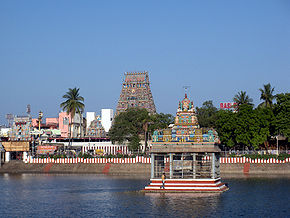 சைவ மதத்தினர் போற்றிப் புகழும் திருத்தலம் மயிலை கபாலீஸ்வரர் கோயில். ஆனால் இந்தக் கோயில் புனித தோமையர் வழி வந்த தமிழ் கிறிஸ்துவர்களுக்கே சொந்தமானது. அதனால் கபாலீஸ்வரர் கோயில் கருவறையிலிருந்து பிராமணர்கள்……………]
சைவ மதத்தினர் போற்றிப் புகழும் திருத்தலம் மயிலை கபாலீஸ்வரர் கோயில். ஆனால் இந்தக் கோயில் புனித தோமையர் வழி வந்த தமிழ் கிறிஸ்துவர்களுக்கே சொந்தமானது. அதனால் கபாலீஸ்வரர் கோயில் கருவறையிலிருந்து பிராமணர்கள்……………]

“இயேசு” என ஒருவர் வாழ்ந்தார் என்பதே கட்டுக்கதையா என்னும் கேள்வி உள்ள போது கருணாநிதியின் தோழர்கள் தமிழ் மய்யம் உரிமையாளர்களான மயிலாப்பூர் சாந்தோம் சர்ச் கட்டும் கதைக்கு நக்கீரன் தரும் உதவியோ.
தாமஸ் எனப்படும் தோமோ இந்தியா வந்தார் என்பதற்கு எவ்வித ஆதாரமும் கிடையாது. இதற்கு மிகப் பழைய ஆதாரம் எனப்படுவது 3ம் நூற்றாண்டிலெ செவிவழிக் கதைகள் துணை கொண்டு சிரிய மொழியில் புனையப்பட்ட புத்தகமான ” தோமோவின் நடபடிகள்” என்பது ஆகும்.
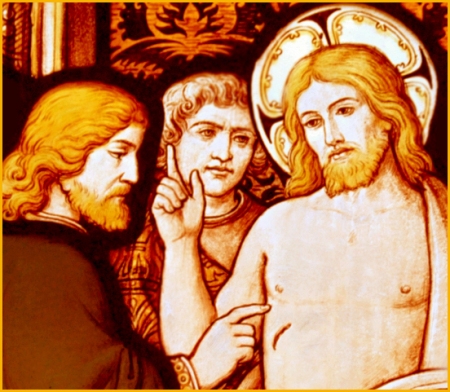
ரோமன் போப்பரசரின் பதிப்பாளர் பர்ன் ஓட்ச் பர்பொர்னெ London: Burns Oates & Washbourne Ltd. Publishers to the Holy See.)) இவர்கள் முக்கிய பதிப்பு- தூய பட்லரின் புனிதமானவர்கள் வரலாறு எனப்படும்- பட்லர்ஸ் லைவ் ஆப் செயின்ட்ஸ் (Butlers lives of Saints)என்னும் 12 தொகுப்பு, மாதமொன்றிற்கு- அம்மாதத்தின் புனிதர்களை நினைவு படுத்தும்படியாக 12 தொகுப்பு கொண்டது.
தோமோ பற்றிக் கூறும்போது தெளிவாக கூறுவது 12 ஏசு சீடர்களில் யாரைப்பற்றியும் நம்பகத்தன்மை கொண்ட உண்மைகள் கிடையாது என்பது போலே தோமோ பற்றியும் தெரியவில்லை என ஆரம்பிக்கிறார். அவர் “தோமோ நடபடிகளை விமர்சிக்கையில்இந்தக் கட்டுக்கதாசிரியர் கப்பல் பிரயாணிகளைக் கேட்டு சில விபரங்கள் எழுதியிருக்கிறார், ஆனல் தோமோ நடபடிகள் கதையில் சற்றும் உண்மையில்லை என்கிறார்.
What Chruch says about ACTA THOMAE?- in St. Thomas Christian Encyclopaedia, ed. George Menachery in which Article -The Acts of Thomas- by Rev.Anthony Poathoor.
- “The Acts of Thomas in its present form contains many Doctrinal Errors. Some Historians conclude that The Acts of Thomas is the work of an unknown heretic who made use of the Authority to support his own Theological Opinions. Some Other Authors have suggested that the present work is the corrupted form of an older Orthodox version. In the view of former, We can hardly call the text interpolated, because the additions increase nearly Ten-fold to the Original Text. There is no doubt that the present Acts of Thomas is unacceptable from the Doctrinal point of View”. Page- 24
Holy see’s Publisher “Burn Oates & Wash BouRne Ltd” has Published Multi Volume “Butler’s Lives of Saints” Edited by Rev.Alban Butler (with Nihil Obstat & Imprimatur from Two Archbishop for its Doctrinal Acceptance) says-
“.. the Syrian Greek who was probably the fabricator of the Storywould have been able to learn from Traders and Travelers such details as the name Gondophorus with Tropical details.”. Pages 213-218, in Volume December.
The Authors have gone through all the major works of the claims of St.Thomas Indian visit claims and one of the highly acclaimed work of ‘The Early Spread of Christianity in India’- Alfred Mingana connected this with Apostle Thomas visit claims and clearly affirms-
“It is likely enough that the Malabar Coast was Evangelized from Edessa at a Later date, and in the course of time a confused tradition connected this with Apostle Thomas himself.”
Holy See’s publisher says that Indian Christianity has mostly the Origins from Edessa, which is in present Turkey- But did Edessa was the area where Thomas Worked?- let us see, how a detailed study by a Secular Historian says-
“Edessa-the modern Urfa in North West Mesopotamia is a city with an immensely long history going back to the Babylonian & Assyrian age. About 132BC it has became a seat of local dynasty, one of whose king raised the pillar. CHRISTIANITY Was Introduced in the Jewish Colony in the 2nd Century CE, and the church developed a national spirit using the Syriac Language and becoming the First Seat of Christianity in the Syriac speaking Community.”- Page-2176, World History; Editor J.A.Hanmeston.
தாமஸ் எனப்படும் தோமோ இந்தியா வந்தார் என்பதற்கு எவ்வித ஆதாரமும் கிடையாது. இதற்கு மிகப் பழைய ஆதாரம் எனப்படுவது 3ம் நூற்றாண்டிலெ செவிவழிக் கதைகள் துணை கொண்டு சிரிய மொழியில் புனையப்பட்ட புத்தகமான ” தோமோவின் நடபடிகள்” என்பது ஆகும். இந்தியாவின் எந்தவொரு மொழியுலும் தோமோ- ஏசு என்னும் பெயர் கூட 16ம் நூற்றாண்டிற்கு முன்பானது ஏதும் இல்லை. கேரளத்தின் மலையாள மொழியில் ரம்பன் பாட்டு என்னும் பாடல்-இதன் மொழி நடை இது 19ம் நுற்றாண்டின் பிற்பகுதியுடையதுஎன்பது தெளிவாகத் தெரிவிக்கிறது. இத்தொகுப்பு இரண்டு கத்தோலிக்கப் பேராயர்களல் முத்திரை ஒப்புமை நிகில் ஒப்ஸ்டட் இம்ப்ரிமெடுர் பெற்று வெளிவந்தது.
http://ankaraikrishnan.wordpress.com/2010/01/02/kapaleeshwarkapaleeshwar/திருமயிலைத் திருத்தலம்- இலக்கிய, வரலாற்றுப் பார்வை,
பேராசிரியர். Dr.சு.ராஜசேகரன்.,1989,
Doctral Thesis done in 1986, on the Same name at Madras University, the Author was then working as Tamil Professor at Nandanam Govt. Arts College, Chennai.
The Author Analyses various Stone Inscriptions and Archeological findings from Kapalishwarar Temple and Santhome and gives his views.
இப்போதுள்ள கபாலிசுவரர் கோயில், நாயன்மார்களால் பாடப் பெற்ற பழைய கபாலிசுவரர் கோயில் என்ற பொதுவான நம்பிக்கை மக்களிடையே நிலவி வருகிறது. ஆனால், தொல்பொருள் ஆராய்ச்சியாளர்கள் சாந்தோமில் கண்டெடுத்த புதைபொருள்களிலிருந்து பழைய கோயில் வேறு இடத்தில் இருந்திருக்க வேண்டும் என்றும், பெரும்பாலும் சாந்தோம் கடற்கரையாக இருக்கலாம் என்றும் எண்ண வேண்டியிருக்கிறது.. ..பழைய கபாலிசுவரர் கோயிலலின் இடிபாடுகள் இப்போதுள்ள கோயிலுக்குச் சிறிது தொலைவில் கிழக்கு திசையில் சாந்தோம் கடற்கரையருகே கண்டு எடுக்கப்பட்டதே இதற்குக் காரணமாகும்.
1923இல் தொல்பொருள் ஆய்வுத் துறையினர் சாந்தோம் கதிட்ரலில் நிகழ்த்திய அகழ்வாராய்ச்சிகளால்கல்வெட்டுகளும், தூண்களும், சிலைகளும் கண்டெடுக்கப்பட்டன. கல்வெட்டுகள் சிவன் கோயிலைக் குறிக்கின்றன. கற்றூண்களிலும் கல்வெட்டுகள் காணப்பெறுகின்றன. மயிலோடு கூடிய முருகர் சிலையும் கண்டெடுக்கப்பட்டது. 1921இல் மறைத்திரு ஹோஸ்டன், சாந்தோம் கதிட்ரலில் கண்டெடுத்த வடமொழிக் கல்வெட்டு “கருவறை உட்பட எல்லாக் கட்டிடங்களும் மயிலாப்பூரிலுள்ள புகழ்பெற்ற சிவனுக்கும் பார்வதிக்கும் உரியவையாகும்” என்று குறிப்பிடுபகிறது. மற்றொரு தானக் கல்வெட்டில், “திருமயிலாப்பில் பூம்பாவை” என்று குறிப்பிடுப்படுவதாலும், பழைய கபாலிசுவரர் கோயில் கடற்கரையருகே இருந்திருக்க வேண்டும் என்பது புலனாகிறது.
அருணகிரிநாதர் திருப்புகளில் கபாலிசுவரர் கோயில் கடற்கரை அருகே இருந்தது என்று குறிப்பிடுப்படுவதால், பழைய கோயில் கடற்கரையருகே இருந்திருக்க வேண்டும் என்று கே.வி..இராமன் கருதிகிறார். பக்கம்287,288
இந்திய மக்கள் தொகைக் கணக்கெடுப்புத்துறைவெளியிட்டசென்னை மாநிலக் கோயில்கள் (Temples of Madas State) என்னும் நூலில் காணப்படும் கருத்துக்கள் :
கி.பி. 16ஆம் நூற்றாண்டின் தொடக்கத்தில் சாந்தோம் கடற்கரையிலிருந்த கோயில் போர்த்துக்கீசியர்களால் அழிக்கப் பட்டிருக்க வேண்டும் என்று கூறுகிறது. இந்நூல் கூறும் புதிய செய்தி,இப்போதுள்ள கபாலிசுவரர் கோயிலும் குளமும் முந்நூறு ஆண்டுகளுக்கு முன், மயிலை நாட்டு முத்தையப்ப முதலியாராலும் அவருடைய வாரிசுகளிலாலும் கட்டப்பட்டது என்பதேயாகும். (பக்-289 – Quotes Census of India-1961; Temples of Madras State, 1 Chingleput District and Madras City, P.204)
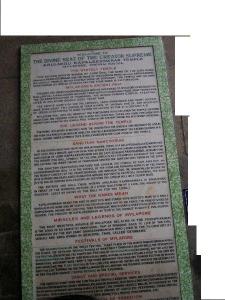 The Present Temple very clearly shows for Schoalrs that it was constructed only in 17th Cen. CE, few Tamil Schloars maintained that the Old Temple was in same place, and the Present Temple was constructed above it. Another Set of Scholars maintained that the Older Temple was in Sea Shore(Mostly the Present Santhome Cathedral) and the Author analyses various books on Mylapur Temple and comes to the Conclusion as below, and he before concluding quotes the Historic fact-
The Present Temple very clearly shows for Schoalrs that it was constructed only in 17th Cen. CE, few Tamil Schloars maintained that the Old Temple was in same place, and the Present Temple was constructed above it. Another Set of Scholars maintained that the Older Temple was in Sea Shore(Mostly the Present Santhome Cathedral) and the Author analyses various books on Mylapur Temple and comes to the Conclusion as below, and he before concluding quotes the Historic fact-
போர்த்துக்கீசியர்கள் இந்துக் கோயில்களை அழித்த செய்தியைக் கேள்விப்பட்டு இராமராயர் கி.பி. 1558இல், சாந்தோம் மீது படை எடுத்துப் போர்த்துக்கீசியரைப் பணிய வைத்துப் பின்னர்ப் பழுதுபட்ட கோயில்களைப் பழுதுபார்க்க ஆணையில்ட்ட செய்தியாலும் பழைய கபாலிசுவரர் கோயில் போர்த்துக்கீசியர்களால் .(Quotes from S.Kalyanasundaram-A Short History of Mylapore page-8) அழிக்கப் பட்டது என்ற முடிவுக்கு வரலாம்.
ஆகவே, முடிபாக, பழைய கபாலிசுவரர் கோயில், கடற்கரையருகே இருந்ததென்பதையும், கி.பி. பதினைந்தாம் நூற்றாண்டின் இறுதியில் போர்த்துக்கீசியரால் அழிக்கப் பட்டதென்பதையும், கி.பி. பதினாறாம் நுற்றாண்டில் இப்போதுள்ள இடத்தில் புதிய கோயில், மயிலை நாட்டு நயினியப்ப முத்தையப்ப முதலியார் மகன் முதலியாரால் கட்டப் பெற்றது என்பதையும் தெற்றென உணரலாம். -பக்கம் 291 திருமயிலைத் திருத்தலம்- இலக்கிய, வரலாற்றுப் பார்வை, பேராசிரியர்.Dr.சு.ராஜசேகரன்.,1989,
தோமோ நடபடிகள் என்னும் 3ம் நூற்றாண்டு நூல் தோமோ கொண்டோபரஸ் என்னும் மன்னன் நாட்டுக்கும் பின் மச்டய் என்னும் மன்னன் நாட்டில் ராணியையும் இளவரசனையும் சூன்யம் செய்து மதமாற்றம் செய்ததால் மரணதண்டனையில் கொன்றான் என வருகிறது.
மச்டய் நாடு பற்றி தோமோ நடபடிகள் கூறுவது: மச்டய் நாடு ஒரு பாலைவன நாடு, பாலைவனப் பகுதி.
The Ninth Act: of the Wife of Charisius.
87 And when the apostle had said these things in the hearing of all the multitude, they trode and pressed upon one another: and the wife of Charisius the king’s kinsman Ieapt out of her chair and cast herself on the earth before the apostle, and caught his feet and besought and said: O disciple of the living God, Thou Art Come Into A Desert Country,For We Live In The Desert;
DETAILS OF JEWS
எபிரேயர்கள் அந்த சிறிய பாலைவன நாட்டை தங்கள் புராணக் கதையில் புனையப்பட்ட தேர்ந்தெடுக்கப்பட்ட நாடு, மக்கள் என்பதை அப்படியே ஏற்று அந்த சிறு பகுதியில் வாழ்ந்தனர்.
கடல் வாணிகம் செய்யவில்லை.
ஜெருசலேம் என்பது ஒரு கால்பந்து மைதான அளவு தான்.
சாலைகள் தெருக்கள் என்பதெல்லாம் ஜெருசசேமில் கிடையாது.
Bible As Literature, Oxford University Press,
written by 3 Professors John.A.Gabel, Charles B.Wheelr and Antony.D.York.
How was Hebrews living during OT times.
The small Corner of the Eastern Mediterranean, we have to keep reminding ourselves that it take up only Lower Third of that coast- particularly speaking was the Whole World to them.
Page-77
With Just a Few Exceptions, No Canaanite Or Israelite City before the Roman Period occupied more area than that of an American University Football Stadium, most Villages were hardly bigger than the Playing Field itself. King’ David’s Jerusalem is estimated to have measured about 300 x 1300 foot. Inside the City-walls houses would be crammed together according to no particular pattern, leaving room for Passages bu not for Streets. Before the Greek Period there were no Public Building of the Kind that we take for granted, provided by the Municipal Government.
Pages- 87,88
Foreign Countries appear in the OT only as Military Allies or Enemies of the Israelites or as the Habitat of Alien Gods; otherwise, not a Slightest interest is shown in them.
Page-77
The Best Opportunity for Economic Development, it might seem was One they never took; Commerce by Sea with Mediterranean always at their door, the Israelites stubbornly remained a Land Locked People. They were effectively Shut off from the Coast at first by the Philistines, but the warfare between the two, more had to do with the Philistines attempt to expand toward the east than with any desire of the Israelite to gain access to Sea. Although the Palestinian Coast has no natural Harbors south of Carmel, this need not have been a Permanent Obstacle.
The Israelites were Content to Let others – Phoenicians and Egyptians conduct their Merchant Shipping for them, almost as though they Believed the Covenant Language in its Narrowest Sense as a Promise of Land and Nothing Further.
It is clear from their writings in the OT THAT THE SEA WAS ALWAYS to them, had no significant part to Play in their Thought.
Pages 86-87.
இந்தியர்கள் உலகிற்கு நாகரிகம் தந்தவர்கள்.
தோமோ தந்தார் என்பது பேரன் பாட்டியைப் பெற்றவன் என்று கூறுவது போல ஆகும்.
For Further
http://thomasmyth.wordpress.com/2010/04/19/%e0%ae%95%e0%ae%aa%e0%ae%be%e0%ae%b2%e0%af%80%e0%ae%b8%e0%af%8d%e0%ae%b5%e0%ae%b0%e0%ae%b0%e0%af%8d-%e0%ae%95%e0%af%8b%e0%ae%af%e0%ae%bf%e0%ae%b2%e0%af%88-%e0%ae%87%e0%ae%9f%e0%ae%bf%e0%ae%a4%e0%af%8d/


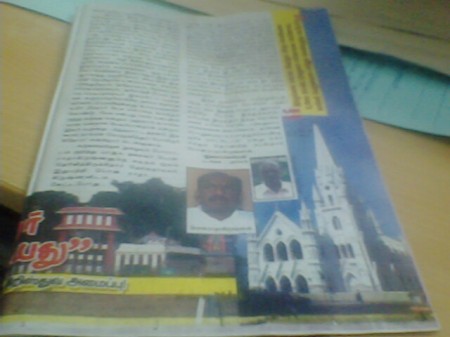

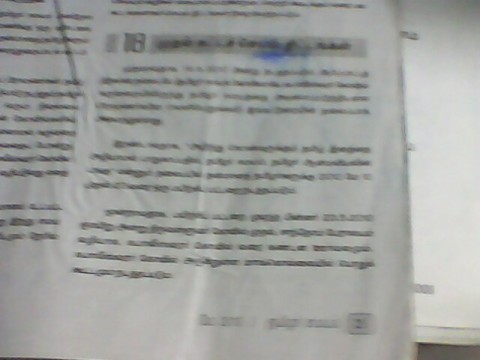
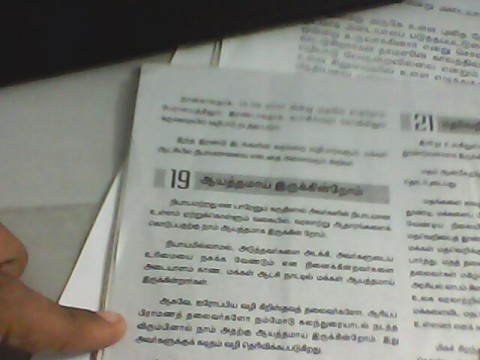




 Bishop Medleycott is the godfather of Thomas-in-India scholarship in India, and even in his day he was accused of working under religious, racial, regional, political, and linguistic influences. He was the Vicar Apostolic of Trichur from 1887 to 1896, the diocese in which the alleged landing place of St. Thomas, Kodungallur, is located, and was the first European missionary bishop to be appointed by Rome to rule over the local Syrian Christian community. This community existed in a forgotten Kerala backwater that was overshadowed by San Thome at Mylapore, and Bishop Medleycott had a mandate – or believed he had a mandate – to raise Kodungallur’s status and prepare the ideological ground for the apostle’s “return”.
Bishop Medleycott is the godfather of Thomas-in-India scholarship in India, and even in his day he was accused of working under religious, racial, regional, political, and linguistic influences. He was the Vicar Apostolic of Trichur from 1887 to 1896, the diocese in which the alleged landing place of St. Thomas, Kodungallur, is located, and was the first European missionary bishop to be appointed by Rome to rule over the local Syrian Christian community. This community existed in a forgotten Kerala backwater that was overshadowed by San Thome at Mylapore, and Bishop Medleycott had a mandate – or believed he had a mandate – to raise Kodungallur’s status and prepare the ideological ground for the apostle’s “return”.
 But Bishop Medleycott’s victory went further. He got himself named as the St. Thomas authority in the prestigious
But Bishop Medleycott’s victory went further. He got himself named as the St. Thomas authority in the prestigious




 We then set to work on the WikipediaThomas the Apostle article adding verifiable references and short sections with citations. Every statement we made was supported with an authoritative reference from a recognized historian of Christianity. We were very careful not to delete any material already posted on the page or refer to the demolition of the Kapaleeswara Temple in Mylapore by the Portuguese. However, as our contribution progressed, Mylapore did come into the picture and we introduced it with a reference to Swami Tapasyananda of the Ramakrishna Math in Mylapore and the article he had written in Vedanta Kesaricalled
We then set to work on the WikipediaThomas the Apostle article adding verifiable references and short sections with citations. Every statement we made was supported with an authoritative reference from a recognized historian of Christianity. We were very careful not to delete any material already posted on the page or refer to the demolition of the Kapaleeswara Temple in Mylapore by the Portuguese. However, as our contribution progressed, Mylapore did come into the picture and we introduced it with a reference to Swami Tapasyananda of the Ramakrishna Math in Mylapore and the article he had written in Vedanta Kesaricalled 
.jpg) The concocted absurdities found in theWikipedia Thomas the Apostle article today, which lacks citations and references that stand up to scrutiny, can be exposed with a single example: the statement in the Thomas and India subsection of the article says that the king who executed Judas Thomas for sorcery and crimes against women, Mazdai (Misdaeus in Greek), was “the local king at Mylapore”. This is a preposterous statement. The name Mazdai (or Masdai) is Persian and specifically identifies a person who is Zoroastrian by religion.
The concocted absurdities found in theWikipedia Thomas the Apostle article today, which lacks citations and references that stand up to scrutiny, can be exposed with a single example: the statement in the Thomas and India subsection of the article says that the king who executed Judas Thomas for sorcery and crimes against women, Mazdai (Misdaeus in Greek), was “the local king at Mylapore”. This is a preposterous statement. The name Mazdai (or Masdai) is Persian and specifically identifies a person who is Zoroastrian by religion. 
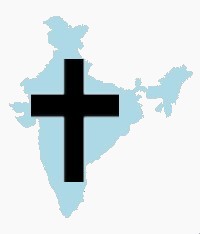

 Falsely accusing the native Hindus population of an ancient India that gave 4th century Syrian Christian refugees from Persia funds and land to build churches, with the murder of their patron saint Mar Thoma, certainly falls into the category of “intemperate vomit of false witness, hatred, and uncharitableness”. Christians are perceived to be an educated and modern secular community, but we see from their fabricated encyclopedic writings on St. Thomas (many of which have appeared after the publication of our 1991 essay) that they are the most superstitious of Indian communities with an obsessive allegiance to an authoritarian and very corrupt medieval Indian church.
Falsely accusing the native Hindus population of an ancient India that gave 4th century Syrian Christian refugees from Persia funds and land to build churches, with the murder of their patron saint Mar Thoma, certainly falls into the category of “intemperate vomit of false witness, hatred, and uncharitableness”. Christians are perceived to be an educated and modern secular community, but we see from their fabricated encyclopedic writings on St. Thomas (many of which have appeared after the publication of our 1991 essay) that they are the most superstitious of Indian communities with an obsessive allegiance to an authoritarian and very corrupt medieval Indian church.




















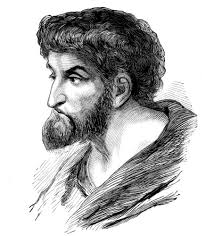 “The English-language press in India is politically correct, opportunistic, and engaged in minority appeasement just like the politicians. It is a commercial commodity without ideals or ethics. It has no credibility among the informed public because it is wedded to a secularist fundamentalism that is at odds with the spiritual ethos of the Indian people. At the same time it is able to shape public opinion to some extent, and it benefits politically from its morally criminal position of untruth. But one day this will change, and one day the people of Mylapore will learn the true history of the holocaust that took place on their beaches in the 16th century in the name of a malevolent foreign god whose intolerant nature and imperial ambitions were first recorded in the Old Testament.” – IS
“The English-language press in India is politically correct, opportunistic, and engaged in minority appeasement just like the politicians. It is a commercial commodity without ideals or ethics. It has no credibility among the informed public because it is wedded to a secularist fundamentalism that is at odds with the spiritual ethos of the Indian people. At the same time it is able to shape public opinion to some extent, and it benefits politically from its morally criminal position of untruth. But one day this will change, and one day the people of Mylapore will learn the true history of the holocaust that took place on their beaches in the 16th century in the name of a malevolent foreign god whose intolerant nature and imperial ambitions were first recorded in the Old Testament.” – IS

 It is not clear why the newspaper gave her space to blow pious bubbles, though soft-soaping the religious minorities is the accepted practice in India’s English-language press. Even so,
It is not clear why the newspaper gave her space to blow pious bubbles, though soft-soaping the religious minorities is the accepted practice in India’s English-language press. Even so, 


 Father Lawrence says the post is believed to be from that same log of wood. Though there is another story that the post comes from the chapel that St. Thomas built in 74 A.D.
Father Lawrence says the post is believed to be from that same log of wood. Though there is another story that the post comes from the chapel that St. Thomas built in 74 A.D. Father Lawrence and his reporting scribe Susan Muthalaly are speaking out of both sides of their mouth. According to them, the story of St. Thomas and his miraculous log of wood is true and not true at the same time. Of course, it is not true as they both very well know but are unwilling to say as faithful Christians.
Father Lawrence and his reporting scribe Susan Muthalaly are speaking out of both sides of their mouth. According to them, the story of St. Thomas and his miraculous log of wood is true and not true at the same time. Of course, it is not true as they both very well know but are unwilling to say as faithful Christians. Apropos the article “The Santhome miracle” (TNIE, Jan. 4), Santhome Cathedral and Bishop House stand on the site of the original Kapaleeswara Temple which was destroyed in 1566 by the Portuguese. This site is the highest point on the Mylapore beach and is naturally protected from sea surges, Dr, R. Nagaswami, former director of the Tamil Nadu Department of Archaeology, has written:
Apropos the article “The Santhome miracle” (TNIE, Jan. 4), Santhome Cathedral and Bishop House stand on the site of the original Kapaleeswara Temple which was destroyed in 1566 by the Portuguese. This site is the highest point on the Mylapore beach and is naturally protected from sea surges, Dr, R. Nagaswami, former director of the Tamil Nadu Department of Archaeology, has written: “The most important Kapaleeswara Temple lost all its ancient building during the Portuguese devastation and was originally located by the Santhome Cathedral. A few Chola records found in the Santhome Cathedral and Bishop’s House refer to Kapaleeswara Temple and Poompavai. A Chola record in fragment found on the east wall of the Santhome Cathedral refer to the image of Lord Nataraja of the Kapaleeswara Temple.” And, “A 12th century Chola record in the Santhome Cathedral region, refers to a Jain temple dedicated to Neminathaswami,”
“The most important Kapaleeswara Temple lost all its ancient building during the Portuguese devastation and was originally located by the Santhome Cathedral. A few Chola records found in the Santhome Cathedral and Bishop’s House refer to Kapaleeswara Temple and Poompavai. A Chola record in fragment found on the east wall of the Santhome Cathedral refer to the image of Lord Nataraja of the Kapaleeswara Temple.” And, “A 12th century Chola record in the Santhome Cathedral region, refers to a Jain temple dedicated to Neminathaswami,” This letter was not published in
This letter was not published in 

 Saint Thomas
Saint Thomas
 Sixty years after Independence, a great newspaper, The New Indian Express, lies dying in Mount Road, brought low by unprincipled editors and an indifferent owner. [1] The editors believe that cultivating religious superstitions and caste prejudice will raise readership and save their power positions. They are unscrupulous, no different than the criminal and communal politicians who sit in our Indian legislatures. But Aditya Sinha and Manoj Kumar Sonthalia, try as they might, have lost the race for subscriptions.
Sixty years after Independence, a great newspaper, The New Indian Express, lies dying in Mount Road, brought low by unprincipled editors and an indifferent owner. [1] The editors believe that cultivating religious superstitions and caste prejudice will raise readership and save their power positions. They are unscrupulous, no different than the criminal and communal politicians who sit in our Indian legislatures. But Aditya Sinha and Manoj Kumar Sonthalia, try as they might, have lost the race for subscriptions.
 All these pious items of fable and romance would be of no account except that the legend carries at it heart a vicious communal tale of harassment and murder. St. Thomas, according to Ponnu Elizabeth Mathew, “…lived in hiding [at Little Mount] before he was slain by Raja Mahadevan, the leader on Mylapore, [on Big Mount].” Other versions of the Portuguese fable target Brahmins as the assassins of the apostle. The charge is false and deeply offensive to Hindus, and this has been brought to the attention of The New Indian Express editors years ago, when they were challenged about other stories of St. Thomas they had published and presented to readers as Indian history. On 29 June 2004, we wrote to the editor as follows:
All these pious items of fable and romance would be of no account except that the legend carries at it heart a vicious communal tale of harassment and murder. St. Thomas, according to Ponnu Elizabeth Mathew, “…lived in hiding [at Little Mount] before he was slain by Raja Mahadevan, the leader on Mylapore, [on Big Mount].” Other versions of the Portuguese fable target Brahmins as the assassins of the apostle. The charge is false and deeply offensive to Hindus, and this has been brought to the attention of The New Indian Express editors years ago, when they were challenged about other stories of St. Thomas they had published and presented to readers as Indian history. On 29 June 2004, we wrote to the editor as follows:

 It must also apologise for the destruction of Hindu temples that started with the criminal Francis Xavier in the 16th Century and goes on till today in remote tribal areas, for the Inquisition in Goa that killed tens of thousands of innocents, for conversions made by force or inducement, and for the continued maligning of Hindu society and religion that takes place in churches outside of India by Indian Christian priests on tour. An eminent Hindu scholar no less than Arun Shourie has called for such an apology in his book Missionaries in India: Continuities, Changes, Dilemmas. He writes:
It must also apologise for the destruction of Hindu temples that started with the criminal Francis Xavier in the 16th Century and goes on till today in remote tribal areas, for the Inquisition in Goa that killed tens of thousands of innocents, for conversions made by force or inducement, and for the continued maligning of Hindu society and religion that takes place in churches outside of India by Indian Christian priests on tour. An eminent Hindu scholar no less than Arun Shourie has called for such an apology in his book Missionaries in India: Continuities, Changes, Dilemmas. He writes:

%20-%20Tiruvalla.jpg)










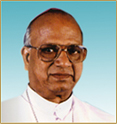

















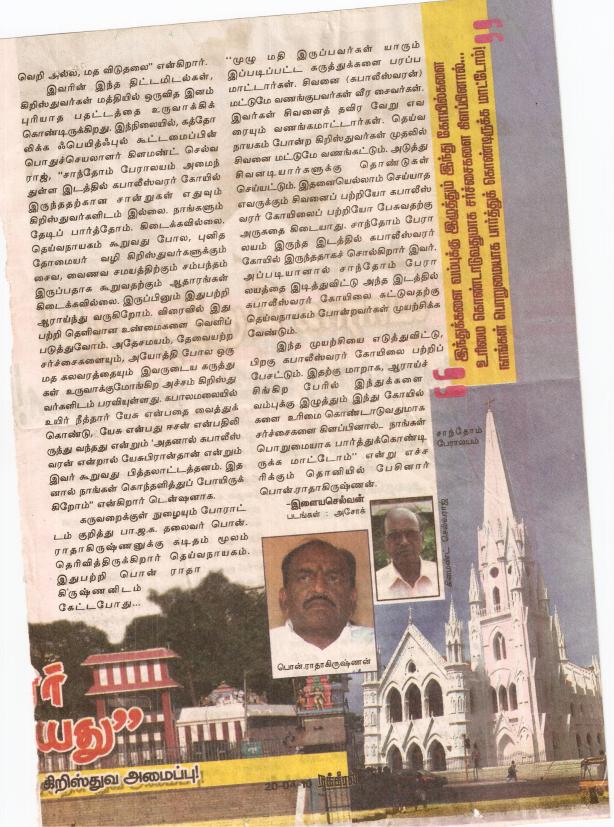
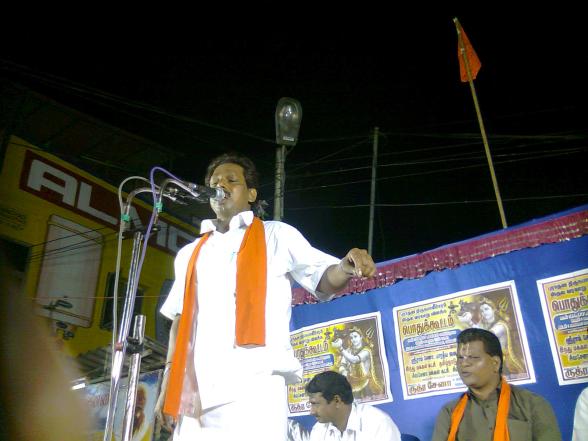


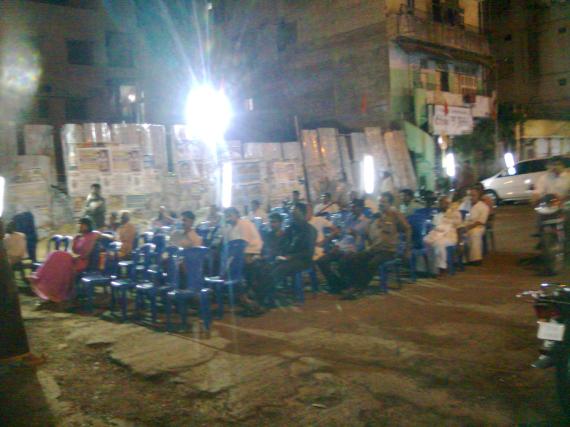
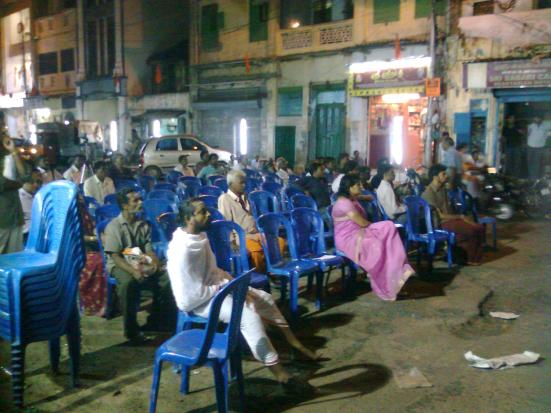

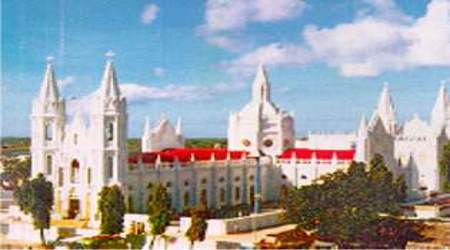
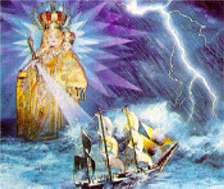 the shrine was the only building to escape the devastation. Perhaps the most extraordinary aspect is that buildings on the same elevation, further inshore were destroyed, while those inside the shrine remained entirely dry. Basilica officials did not hesitate to call the event miraculous, an opinion shared by Sebastian Kannappilly, a businessman from neighboring Kerala state who was in the shrine during Mass. He stated: "It was a miracle that the water did not enter the church." His driver, who was waiting outside the Church, perished.
the shrine was the only building to escape the devastation. Perhaps the most extraordinary aspect is that buildings on the same elevation, further inshore were destroyed, while those inside the shrine remained entirely dry. Basilica officials did not hesitate to call the event miraculous, an opinion shared by Sebastian Kannappilly, a businessman from neighboring Kerala state who was in the shrine during Mass. He stated: "It was a miracle that the water did not enter the church." His driver, who was waiting outside the Church, perished.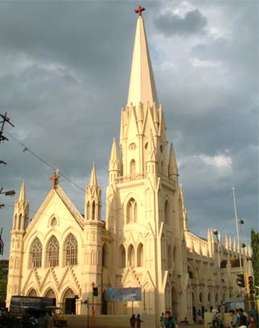









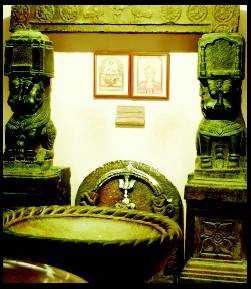


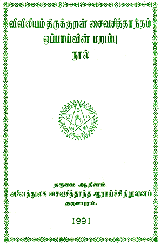
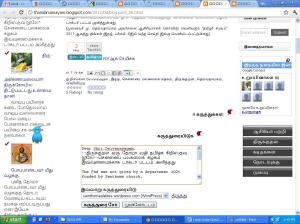









http://listserv.liv.ac.uk/cgi-bin/wa?A2=ind9906&L=INDOLOGY&P=R5273
Date: Tue, 8 Jun 1999 13:32:54 +0300
Reply-To: Indology
Sender: Indology
From: Klaus Karttunen
Subject: Apostle Thomas again
Content-Type: text/plain; charset=”iso-8859-1″
Dear Colleagues
Sorry that I am rather late wit h my reply. I had to switch my e-mail to a
new machine, and it took some time to have it running again.
As to the question of Ganesan, Cosmas mentions twice, in 3, 65 and 11, 14, Christian communities in South India and Sri Lanka, with a Persian bishop, but he does not mention Thomas’ death. In fact he does not mention Thomas at all, in this I made a mistake. Sorry!
Of course the legend of Thomas’ death near Madras is not true, as I think I made clear in my first message, but it was wise that Bal Prasad did not
vouch for the veracity of his “paraphrase”. Even the names of scholars were wrong: instead of C-J De la Vallee-Poussin and Robert Garbe, Louis de La Vallee-Poussin and Richard Garbe.
As to the Acts of Thomas, it is an apocryphal work, and no more history
than other such legends. This kind of literature is common in many
religions. As far as I know, no serious scholar is taking it as part of the
Bible or as a historical source, although it may contains some points
originating in history (such as the name of Gondophares-Gudhaphar). The
point is that it is a genuine work of the fourth century and can be used as
a source for ideas then current among Christians in the West. It is thus
among the earliest sources locating Thomas’ mission and its end in India.
But as I said, nothing here points to South India, rather to the Indus
country.
I do agree with Bal Prasad that there is no evidence of Thomas having
travelled to India (only the spurious tradition nevertheless much earlier
than the Portuguese), but I wonder, whether he visited Ethiopia and Arabia either. The earliest tradition seems to restrict his travels to Edessa (now Urfa in southeastern Turkey, then a principality under Parthian suzerainty).
Stephens quotes a few “Greek” (mostly Latin) Christian sources on India.
His second extract, Jerome (in Latin) about Pantaenus and Bartholomew hails from the (Greek) Ecclesiastical History of Eusebius (early 4th century).
Many more passages can be found in the old collection by W. R. Phillipps in
Indian Antiquary 32, 1903, 1-15 and 145-160. It shows that it was common
belief in the West since the 4th century (but not earlier) that Thomas went
to India (though not to the South).
As to Mylapore, attempts to identify it with Calamina, the traditional
place given as Thomas’ burial “in India”, do not seem convincing. The first to mention Thomas’ grave in Mylapore is thus Marco Polo (3, 18 in Yule – Cordier) in the 13th century. John of Montecorvino visited a church of Thomas on way to China in 1292, this probably was in the South. In 1345 John of Marignolli, another Catholic envoy to China, also visited Mylapore. Thus the Mylapore tradition was earlier than the Portuguese, although they certainly made much of it.
Michael Rabe asked about the stone cross found near Mylapore. See A. C.
Burnell, Indian Antiquary 3, 1874, 308-316. If anybody knows a more recent source, please inform.
I was afraid that somebody will take up the story of Jesus visiting India.
There are two traditions, both quite recent. One is propagated by the
Ahmadiyyas, another by the Russian charlatan Notovich about hundred years ago. I do not know the German book still defending it, but I think Günter Grönbold, Jesus in Indien. Das Ende einer Legende (Munich 1985) has said everything that is necessary.
There are at least 10 books and some 50-60 articles about Thomas
traditions, but I think my answer is long enough without listing them. I am not theologian and not much interested in history of Christian missions, so I would like to drop the subject now.
Regards
Klaus
Klaus Karttunen
Institute for Asian and African Studies
Box 59, 00014 Helsinki, Finland
tel. +358-9-191-22224, fax. +358-9-191-22094